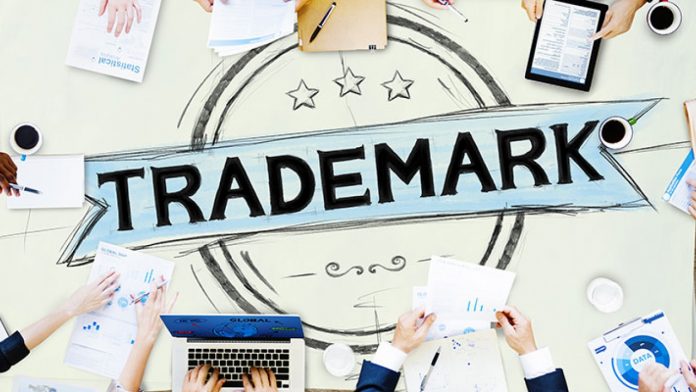This article has been written by Pratibha Tripathi, pursuing the Certificate Course in US Intellectual Property Law and Paralegal Studies from LawSikho.
Table of Contents
Introduction
Often we confuse a brand name and trademark name while using them interchangeably in our daily routine. But have you ever thought that they both hold different meanings and evoke/ identify the services or products of the company in different parameters?
You would have definitely come across this situation, where before starting your business, whether it is for restaurant, fashion, legal or social work, you would have stumbled upon the same question, what should I name my company? This is a path which everyone goes through, what we need is recognition of our branding between the consumers and services takers. Branding of names becomes the prerequisite at that point. Here trademark plays a crucial role by protecting use by other people.
Trademark inculcates in it the registered trade or brand name, logo, sound, or slogan which helps the consumers to identify a company’s services or products. It helps to distinguish the origin of goods of one from the other service or goods provider.
While brand associates to the products and services provided by a company which gives rise to a positive image and emotions of the brand of the company and the services connected to it. Definition ‘A type of product manufactured by a particular co. under a particular name.’
For a marketer, a brand is what represents the values of a company and aims to create awareness and trust. This is created through personal contact with the client in connection with the use of services or products, contact with sales or client support, or through brand communication (marketing).
All trademarks are brands but not all brands are trademarks. It is upon the individual interest to register it or not. Brand functions are similar but relate additionally to identity, image, personality, character, culture, essence, and reputation.
Now that we have understood the concept of trademark and brand separately, let’s move toward the main topic of this article which is trademark effects in protecting fashion brands.
Why do we need a trademark in the fashion industry?
Trademark is one of the branches of Intellectual Property Rights. Trademark is defined in the Trademark Act, 1999 as, “trademark means a mark capable of being represented graphically and which is capable of distinguishing the goods or services of one person from those of others and may include the shape of goods, their packaging, and combination of colors.”
The undaunted creativity the fashion brands endeavor in them is something of a testing task, to navigate them from the counterfeiting issues. With such unprecedented times new platforms have been emerging and trending like., applications, new technologies, and solution-driven manufacturing. But still, the fashion brands stick to their strategies: which is creating mind-blowing, attractive, and inspiring art pieces. And to preserve creativity which is attached to their brand is what trademark helps in.
It helps fashion brands to stand out in a crowded market. To let people recognize the quality of products or services by the name of that brand. Eg. Lakme Fashion Week is a color scheme that becomes part of Trademark. It protects the Name, Logos, Design, attires, and color combination used by distinguishing from others in existence. This Registration helps in fighting out the competitors in the market.
At the outset, a number of fashion brands have set their names in the market. And with the name comes their quality guarantee. Eg., ZARA, H&M, etc., the clothing brand works on its marketing strategies, by advertising them in each medium(newspaper, T.V & social media platforms).
Also, these fashion brands pay such a hefty amount on the advertisements, to place billboards, and in packaging. Ultimately to secure themselves from counterfeiting and imitation they need to register the trademark.
With an overview of the fashion brands in the market, we can precisely say, the brands which have registered their brands under trademark are easily recognized by the consumers and are easier to pick up. The amount a fashion brand pays for its branding is more if compared with the registration of a trademark. And registration comes with protection from counterfeiting and false impressions by others. The plaintiff can take recourse of infringement before the court.
Trademark rights are used to protect the distinctive impression of the brand created in the minds of the consumers and to prevent others from imitating or piggybacking on the brand image and brand loyalty. The goodwill attached with trademark helps even if you have not registered it.
The trademark includes the following categories: –
- Certification Marks
- Collective Marks
- Label
Governing laws in India
In India, a registered and unregistered trademark can be protected through infringement and passing off action respectively. The prerequisite which is to be followed to avail the above protection is that the name, logo, and other known categories should not be descriptive, generic, and deceptive.
According to the spectrum of the distinctiveness of marks established by Abercrombie & Fitch Co. v. Hunting World, 537 F.2d 4 (2nd. 1976), marks fall into various categories of distinctiveness (“Abercrombie classification” or “Abercrombie factors”) and are accorded differing degrees of protection based on the category of distinctiveness.
The various categories of marks are:
- Generic terms:
These include the common name for the products or service and are not capable of distinguishing the goods/services of one business from the other and therefore cannot be afforded any legal protection.
In simple terms, you may also write that ‘generic terms’ refer to ‘general words’ that are not innovative.
2. Descriptive marks:
A descriptive mark is a term with a dictionary meaning which is used in connection with products or services directly related to that meaning. Such terms are not registrable unless it can be shown that distinctive character has been established in the market through extensive use in the marketplace. I know you will ask, why do we have a number of marks of such a name which describes the goods and services of such a brand as well? And yes you asked the right question and the answer is, after using a mark for a couple of months or years, which if, in case creates goodwill between the customers can clear the registration criteria by providing the relevant documents, date of first use of name and commerce.
3. Suggestive marks:
A suggestive mark bears some connection to the nature, quality, or a characteristic of the products or services in relation to which it is used but requires some imagination on the part of the consumer to identify this connection.
Section 9: Absolute grounds for refusal of registration.
Section 11: Relative grounds for refusal of registration.
And by Section 29: Infringement of registered trademark.
The Trademarks Act lays down the grounds for restrictions on the use of such categories as described under the above sections. If someone falls under the above categories then they will not be allowed to register their mark by the Examiner of Trademark.
Ways of protecting one fashion brand from imitation/false representation/ unauthorized use are by two steps:-
- Knockoffs: It includes mimicking the fashion design elements but using another name or label as a tag, other than the original fashion brand. Thus here we cannot claim trademark protection.
- Counterfeiting: It is the process of copying the original fashion design, label, and brand logo. This amounts to piracy of logos etc. but here under this category, we can take the appropriate actions as provided above.
A trademark in fashion design is useful when the design is visually crafted to such an extent that it develops into its element of design. The ongoing scenario shows that the fashion designers are incorporating trademark logos on the outer layering of garments at their creation stage. Therefore the logo becomes the part design, which ultimately protects the design from counterfeiting. Eventually, the brand names were protected under the Trade Marks Act, 1999.
Different IPs through which we can protect the fashion brands
Although, fashion brands can be protected through different IP branches as well for different purposes likewise:
Copyright
Fashion brands can be protected under copyrights. They can copyright their artistic creation on the expression but not the cuts and silhouette, eg. The Diane Von Furstenbreg wrap dress is protected under its design and not protected under its overall dress. Which extends to 60 years. But the design act on the other hand protects it for 10 years to 15 years max.
Geographical Indications Act
The apparel and textures used to create through handcrafted fabric or material to create accessories can come under the protection of the Geographical Indication Act. 
Case laws
In this case, it was held that, according to Section 2(d) of the Design Act, no one can use a design and trademark on the same matter simultaneously. However, after the amendment of the Design Act 2000, Section 11 the concept changed a little, a registered design can be used as a trademark now. And further elaborated Section 19 by clarifying that it doesn’t cancel out the trademark on this particular ground(registration of design).
This case deals with the famous shoe brand named Christian Louboutin, the case relates to its shoes under the ‘red sole’ category which is quite popular among the customers by means of media. However, the defendant chose to counterfeit the plaintiff’s red sole in his selling of shoes, by copying the red sole of it and using different colors on the other parts of the shoes.
Thereafter the plaintiff moved to the court and put down the defendant for using the plaintiff’s well-known mark as explained by the judge in his judgment.
Conclusion
The IP and fashion industries are growing rapidly in our changing world. And so our fashion designers should get familiar with the concepts of how they can protect their hard work and mental labor. IP plays a pivotal role in the global fashion industry (USD 2 trillion per year). So, its use in the fashion industry marks central importance. Trademarks are a very important point for brands to get protection from any future misuse. Fashion designers put a lot of creative minds into coming up with some amazing concepts in the world, so there should be ways to keep their innovative minds out of the fear of getting counterfeit by someone. As innovation is the economy of our country.
References
- https://blog.dennemeyer.com/brand-and-trademark-where-marketing-meets-law?utm_source=Mondaq&utm_medium=syndication&utm_campaign=LinkedIn-integration.
- https://www.redpoints.com/blog/fashion-intellectual-property/.
- https://www.worldtrademarkreview.com/search?search=how%20trademark%20protecting%20fashion%20brands&sort=2&page=3.
- https://www.worldtrademarkreview.com/brand-management/the-wtr-archive-protecting-and-managing-fashion-luxury-and-apparel-brands.
- https://www.worldtrademarkreview.com/brand-management/why-trademark-professionals-should-be-the-forefront-of-sustainable-brand-initiatives.
- https://www.worldtrademarkreview.com/anti-counterfeiting/rpm-review-analysis-inside-glimpse-madrid-changes-covid-19-impact-trademark-practice-and-much-more.
- https://www.mondaq.com/trademark/733436/brand-and-trademark-where-marketing-meets-law.
- https://blog.dennemeyer.com/brand-and-trademark-where-marketing-meets-law?utm_source=Mondaq&utm_medium=syndication&utm_campaign=LinkedIn-integration.
Students of Lawsikho courses regularly produce writing assignments and work on practical exercises as a part of their coursework and develop themselves in real-life practical skills.
LawSikho has created a telegram group for exchanging legal knowledge, referrals, and various opportunities. You can click on this link and join:
 Serato DJ Crack 2025Serato DJ PRO Crack
Serato DJ Crack 2025Serato DJ PRO Crack










 Allow notifications
Allow notifications



